Pasadena Best Pest Control Services
Let Pasadena Best Pest Control inspect your property and offer you our solutions for your pest control problems. For your safety we use only authorized products that are approved by the California State. Our goal is to keep your family and pets health and free of any danger.
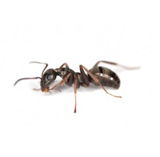
Ants
Ants are eusocial insects of the family Formicidae /fɔrˈmɪsɨdiː/ and, along with the related wasps and bees, belong to the order Hymenoptera. Ants evolved from wasp-like ancestors in the mid-Cretaceous period between 110 and 130 million years ago and diversified after the rise of flowering plants. More than 12,500 of an estimated total of 22,000 species have been classified. They are easily identified by their elbowed antennae and the distinctive node-like structure that forms their slender waists.
Ants form colonies that range in size from a few dozen predatory individuals living in small natural cavities to highly organized colonies that may occupy large territories and consist of millions of individuals. Larger colonies consist mostly of sterile, wingless females forming castes of "workers", "soldiers", or other specialized groups. Nearly all ant colonies also have some fertile males called "drones" and one or more fertile females called "queens". The colonies are described as superorganisms because the ants appear to operate as a unified entity, collectively working together to support the colony.
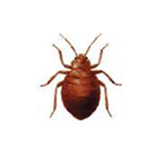
Bed Bugs
Bed bugs, bed-bugs, or bedbugs are parasitic insects of the cimicid family that feed exclusively on blood. Cimex lectularius, the common bed bug, is the best known, as it prefers to feed on human blood. Other Cimex species specialize in other animals, e.g., bat bugs, such as Cimex pipistrelli (Europe), Cimex pilosellus (western US), and Cimex adjunctus (entire eastern US).
The name "bed bug" derives from the preferred habitat of Cimex lectularius: warm houses and especially nearby or inside of beds and bedding or other sleep areas. Bed bugs are mainly active at night, but are not exclusively nocturnal. They usually feed on their hosts without being noticed. A number of adverse health effects may result from bed bug bites, including skin rashes, psychological effects, andallergic symptoms. They are not known to transmit any pathogens as disease vectors. Certain signs and symptoms suggest the presence of bed bugs; finding the insects confirms the diagnosis.
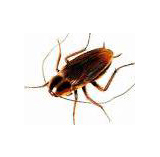
Cockroaches
Cockroaches are insects of the order Blattodea, sometimes called Blattaria, of which about 30 species out of 4,600 total are associated with human habitats. About four species are well known as pests.
Among the best-known pest species are the American cockroach, Periplaneta americana, which is about 30 mm (1.2 in) long; the German cockroach, Blattella germanica, about 15 mm (0.59 in) long; the Asian cockroach, Blattella asahinai, also about 15 mm (0.59 in) in length; and the Oriental cockroach, Blatta orientalis, about 25 mm (0.98 in).Tropical cockroaches are often much bigger, and, contrary to popular opinion, extinct cockroach relatives and 'roachoids' such as the Carboniferous Archimylacris and the Permian Apthoroblattina were not as large as the biggest modern species.
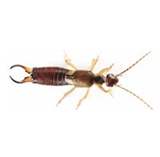
Earwigs
Earwigs are found primarily outdoors. They can cause damages in gardens. Earwigs can fly as it possesses wings but they are reluctant to do so. In a cold or hot weather they tend to find an entry to your house.

Rats
Rats are various medium-sized, long-tailed rodents of the superfamily Muroidea. "True rats" are members of the genus Rattus, the most important of which to humans are the black rat, Rattus rattus, and the brown rat, Rattus norvegicus. Many members of other rodent genera and families are also referred to as rats, and share many characteristics with true rats.
Rats are typically distinguished from mice by their size. Generally, when someone discovers a large muroid rodent, its common name includes the term rat, while if it is smaller, the name includes the term mouse. The muroid family is broad and complex, and the common terms rat and mouse are not taxonomically specific. Scientifically, the terms are not confined to members of the Rattus and Mus genera, for example, the pack rat and cotton mouse.

Mice
A mouse (plural: mice) is a small mammal belonging to the order of rodents, characteristically having a pointed snout, small rounded ears, a body-length scaly tail and a high breeding rate. The best known mouse species is the commonhouse mouse (Mus musculus). It is also a popular pet. In some places, certain kinds of field mice are also common. They are known to invade homes for food and occasionally shelter.
The American white-footed mouse (Peromyscus leucopus) and the deer mouse (Peromyscus maniculatus), as well as other common species of mouse-like rodents around the world, also sometimes live in houses. These, however, are in other genera.
Cats, wild dogs, foxes, birds of prey, snakes and even certain kinds of arthropods have been known to prey heavily upon mice. Nevertheless, because of its remarkable adaptability to almost any environment, the mouse is one of the most successful mammalian genera living on Earth today.
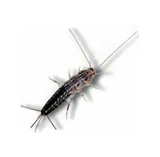
Silverfish
More than just a nuisance in your home or place of business, Silverfish can cause severe damages to your books, photos, paintings and other household items containing starch or cellulose. They can be found in most environments mainly in dark and high humidity areas. They love kitchens, basements, bathrooms and attics.
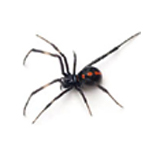
Spiders
Spiders have 8 legs and some of them love moisture and they can be found mainly in basements or other damp areas. Some other spiders like warm and dry areas like subfloor air vents, attics or upper corners of rooms. Most times they will hide in dark areas.
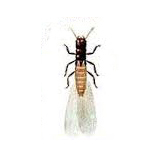
Termites
Termites are a group of eusocial insects that were classified at the taxonomic rank of order Isoptera, but are now classified either as the infraorder Isoptera, or as epifamiliy Termitoidae within the cockroach order Blattodea. While termites are commonly known, especially in Australia, as "white ants," they are not closely related to the ants.
Like ants, and some bees and wasps — all of which are placed in the separate order Hymenoptera — termites divide labor among castes, produce overlapping generations and take care of young collectively. Termites mostly feed on dead plant material, generally in the form of wood, leaf litter, soil, or animal dung, and about 10% of the estimated 4,000 species (about 3,106 taxonomically known) are economically significant as pests that can cause serious structural damage to buildings, crops or plantation forests. Termites are major detritivores, particularly in the subtropical and tropical regions, and their recycling of wood and other plant matter is of considerable ecological importance.
Trusted Service


